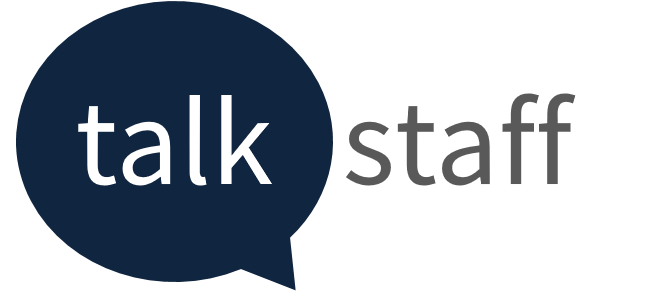5 Scary Statistics HR leaders can’t hide from in 2024
- October 27, 2023
- Posted by: Hannah Ingram
- Category: HR Advice & Support

HR Statistics
Exploring the latest HR statistics and trends that’ll send a shiver down your spine. A HR article with a halloween twist.
As the cold nights draw in and the ghouls come out, we’ll share how you can battle these scary HR statistics.
1) Returning to the office brings a fright
50% rise in hybrid working tribunals
As a HR leader you need a seat at the table if your leadership team are proposing a move back to the office.
In Halloween films, gatherings are just as haunted as abandoned houses. In the same way dragging people back to the office can unleash some hidden monsters.
- The disappearance – You may find your people start disappearing…to other jobs! 77% of workers will start creeping around (on job sites) if you mandate a return to the office and 40% won’t be appearing at your interviews any time soon. To avoid this:
Make sure decisions aren’t taken lightly – Ensure your leadership team consider the full statistics on team productivity and consider the consequences rather than relying on perception. Bear in mind that every company is different. Just because the research says one thing about remote working in the UK doesn’t mean it will be the same for your team.
- Exit interviews – Make sure you conduct exit interviews to catch the ‘why’ behind people leaving. Avoid making assumptions about job moves in your team.
- Employee benefits – Most employees will see a move back to the office as a loss. Taking away from their family time, rising their commuting costs and waking up early during the dark winter frosts. So, investigate ways to provide extra benefits from the return to the office and reduce financial stress. There are also 11 alternatives to 4 day working weeks you can explore too.


2) The zombie – Quiet Quitting
Suddenly your people are quiet quitting as they lose motivation.
Explore how to help your people adapt in a return to the office scenario. Resentment can be infectious and spread through your once productive team. Make sure you offer adjustments for your neurodivergent teammates as well as being flexible around people’s commitments outside of work.
Also ensure fairness, for example if parents can leave for school runs then consider that other employees may have carer commitments, pets to take to the vet or courses outside of work.
Bear in mind that offers may perform better working from home under certain scenarios, for example those managing menopausal symptoms.


3) Dracula – Employment tribunals
These can suck the life out of your organisation’s reputation.
Update your inhouse team or trusted outsourced HR service providers to update your handbook to avoid any confusion about the number of days people need to spend in the office. This will limit the need for disciplinary proceedings and concerns about presenteeism. Make it clear where there are exceptions, particularly for H&S reasons such as extreme weather.
Make sure you’re up-to-date on the upcoming HR legislation including the flexible working bill.
With the flexible working bill expected to come into law in 2024 its likely even more claims will be made as employers are caught out by the changes. It’s also particularly important to avoid any changes that could be seen as discriminatory against protected characteristics.


4) Recruiting the right team to survive the night
36% of HR leaders don’t have the right resources
Everyone who has watched a scary movie will know, you need a top team to fight off the demons. It’s the same in your organisation. HR leaders are often tasked with scary recruitment and onboarding tasks but 36% feel they don’t have the right resources to recruit top talent. Especially when it comes to HR for small businesses.
Hiring the right people has many elements you’ll want to address. Here’s what you can do.
- Team up to make your company stand out – Jobs ads need to show off your company to people. Work with your marketing department, talent acquisition specialists, and leadership to show off what YOU can offer the new hire, rather than focusing on demanding skillsets and experience.
- Inclusive hiring – Make sure you use inclusive language in your adverts. Use certain phrases such as ‘exhaustive’ and ‘enforcement’ can put off female applicants. 76% of job applicants report that a diverse workforce is an important factor to them so ensure you are promoting DEI online too.
- Recruitment services – If you are lacking resources then teaming up with a people consultancy specialising in recruitment services can be a great way to reduce admin and find quality candidates quicker.


5) Can your leaders handle spine-chilling change?
73% of HR leaders say managers aren’t ready
Many great leaders bolt in the face of change. Natural leaders might thrive in good conditions but given them a swirling storm and a swarm of bats and next thing you know they are running away screaming and leaving their team to fend for themselves.
What’s more 76% of HR leaders say managers are overwhelmed by the growth of their job responsibilities. Not to mention that a staggering 1 in 3 workers have left due to ‘accidental managers’ with poor leadership skills. Tight budgets are stretching things thin. You have a few options.
- Leadership development – Develop your leaders to build mental strength and coping mechanisms to avoid burnout. At the same develop their leaderships skills especially empathy and communication so they can motivate their team effectively.
- Hire extra support – Build extra teammates into your HR strategy by hiring support for leaders. Often lack of time is a big challenge for leaders which means teams feel they aren’t being heard. Growing the team to support this through organisational design can help.
- Goal setting – HR leaders can help their leadership teams to set more realistic goals. Many leaders focus on the wrong goal and accidently teach their team to focus on quantity over quality. This in particular is a big mistake sales teams make.
Last Updated on 11 months by Hannah Ingram





